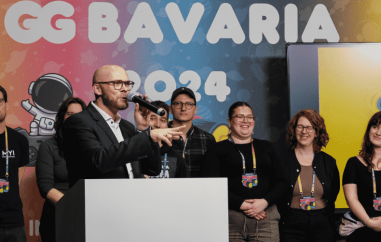Estonia plans to teach computer programming from age 7
Estonia is used to being spotlighted as a technological innovator, but officials in the Baltic state were caught with their firewalls down when the country's plan to teach computer programming and web development to children as young as 7 made headlines around the world. It all started when Wired magazine (wired.com, USA) ran a story in early September, saying that the country that brought the world Skype and pioneered e-government was rolling out a program to teach kids computer languages. Forbes and the Guardian newspaper in the UK picked up the story, and The New York Times mentioned it in an opinion column.
But it wasn't supposed to happen this way.
"Our press release was sent only for Estonian media, but suddenly it went all over the world and it surprised us a lot," Ave Lauringson, head of training at the EU- and Estonian government-sponsored ProgeTiiger, or Tiger Leap Foundation, which is piloting the innovative learning program, told The Munich Eye in an email.
Despite the headlines on the Wired story -- "Estonia Reprograms First Graders as Web Coders" - and Forbes - "Why Estonia Has Started Teaching Its First-Graders To Code" - Tiger Leap's program is not even out of the gate yet, said Lauringson. "At the moment we are interested in schools which are willing to take part in the pilot," she said, adding, "There are a lot of them."
At the beginning of next month, Tiger Leap will start holding online courses for elementary school teachers who want to learn how to teach programming and web development to kids, which, in the foundation's eyes is the logical step forward in e-Estonia.
Since its creation in 1996 by Estonian President Toomas Hendrik Ilves, who was the country's ambassador to the United States at the time, and Education Minister Jaak Aavikson, Tiger Leap has helped make Estonia the first country in Europe where each school has a permanent connection to the Internet, and has helped make computer literacy a basic skill learned at school, and technology a fundamental teaching tool.
The new programming and web courses will use technologies that are already in place in Estonia's schools -- LEGO robotics sets and programs like Microsoft's visual programming language Kodu, and the Skratch programming language, developed by the Massachusetts Institute of Technology's Media Lab - to teach kids how to code.
"The intention is to keep students interested by not focusing that much on the theoretical side of programming by using programs such as Kodu and Skratch, building apps for smartphones, learning the basics of web design, etc," Lauringson said.
Hartmut Kliemt of the Frankfurt School of Finance & Management said teaching code to kids at an early age was "a good idea," provided it was handled right.
"It all depends on getting individualized instruction in doing these things within a network in which the teacher always sees what is going on and can directly remote control and intervene," Kliemt told The Munich Eye.
Because of the vast differences in scale, that would be much easier to pull off in Estonia than in Germany or Britain, where 93 percent of respondents to a poll conducted by the Guardian newspaper said schools should follow Estonia's lead and teach children to code and program. Estonia has a population of 1.3 million, 550 schools, 14,500 teachers and around 135, 000 pupils. England alone (Britain also includes Scotland and Wales) has 56.1 million inhabitants, nearly 17,000 schools and more than 8 million pupils. And for its population of 86.7million, Germany has nearly 35,200 schools, more than half a million teachers and more than 8 million school kids.
Hard on the heels of the announcement of Estonia's plans to raise generations of children who are fluent in programming and web development, the Baltic state got its first digital textbook for school kids. Produced by Koolibri, the book targets first graders, and will use interactive features such as recorded animal and bird sounds, video clips, pictures that can be colored, to teach science. If the Tiger Leap program goes well, the kids might be able to write new chapters for the book in a few years.















































